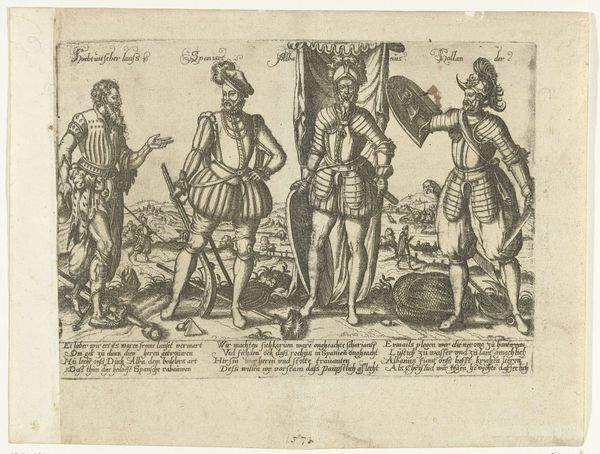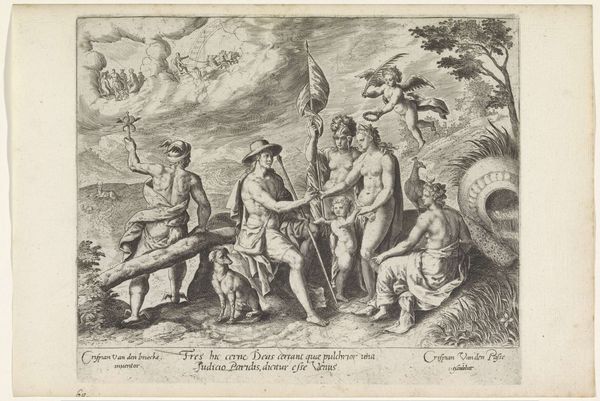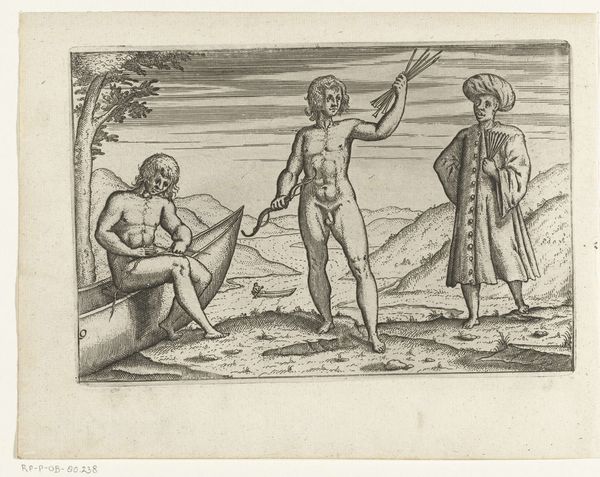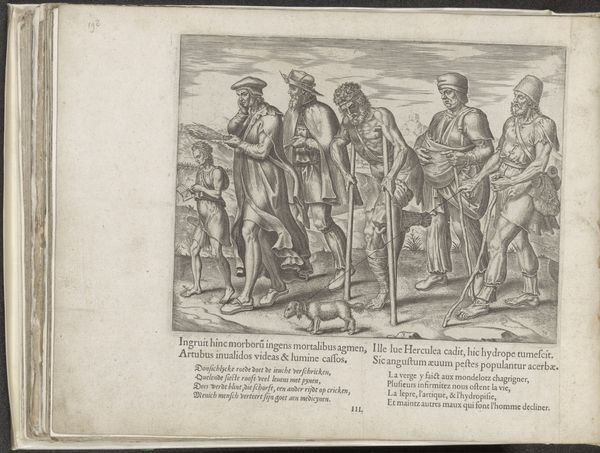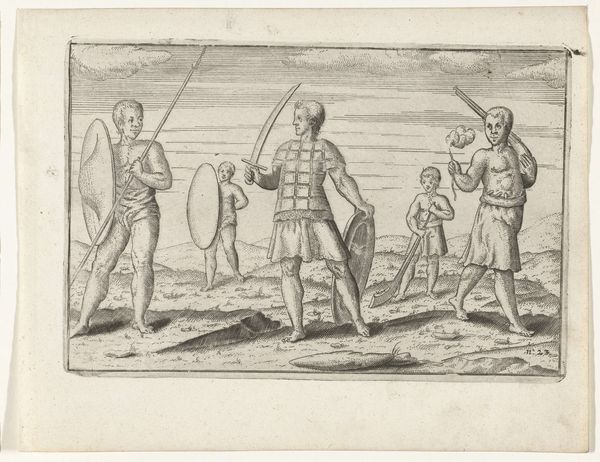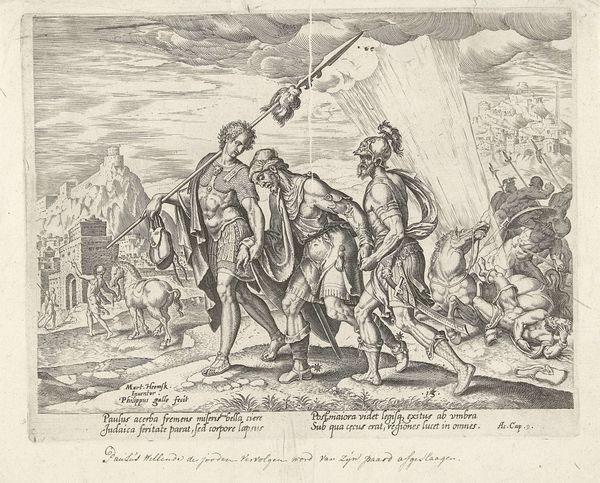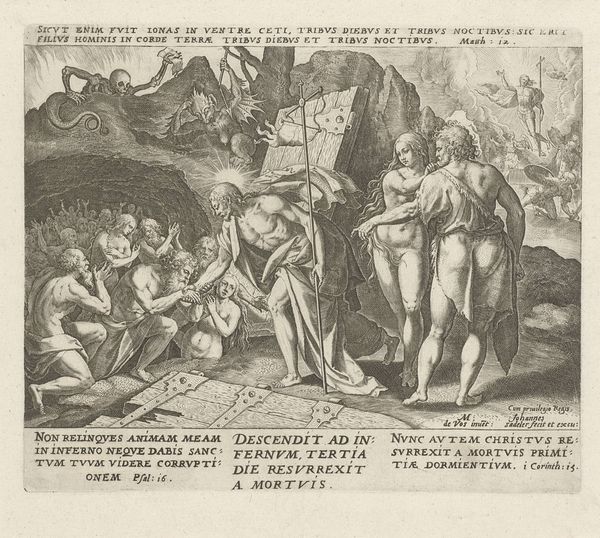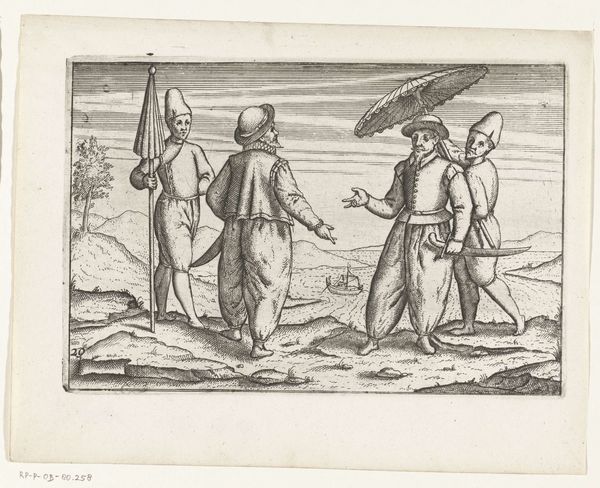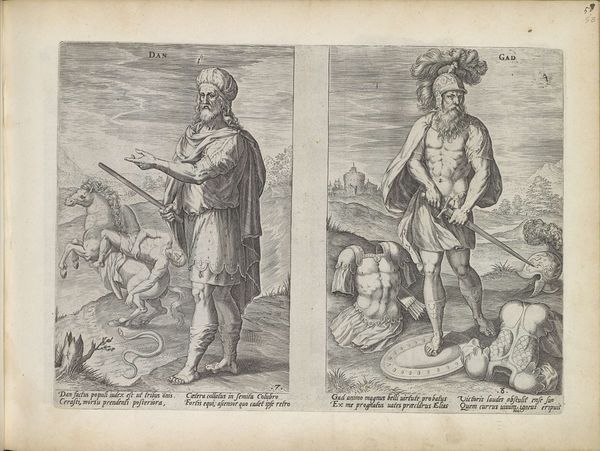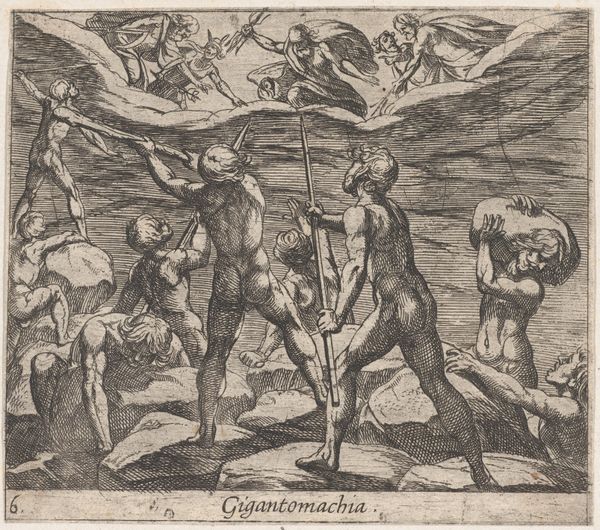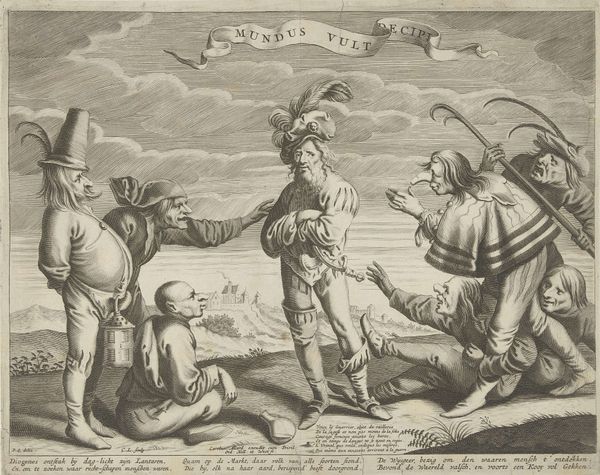
print, engraving
# print
#
pen sketch
#
asian-art
#
orientalism
#
genre-painting
#
history-painting
#
engraving
Dimensions: height 252 mm, width 320 mm
Copyright: Rijks Museum: Open Domain
Curator: I see stark contrasts—a strange tableau of four figures dominating a muted landscape. Is that the ocean in the distance? Editor: This is "Twee mannen uit Cananor en een stel uit Malabar" or "Two men from Cananor and a couple from Malabar" by Joannes van Doetechum, created in 1596. It’s a print currently housed in the Rijksmuseum. It depicts individuals from coastal regions of India. Curator: Right. And note the emphasis on attire, which isn't actually emphasizing, but instead omitting. The near-nakedness signals a cultural perspective typical of that era, I believe—something not quite seen or understood…almost exoticized. Editor: Exactly! The figures, likely representing inhabitants encountered by Dutch traders, reflect the emerging European fascination and simultaneous othering of non-European cultures during the age of exploration. Their presentation feeds directly into colonialist narratives, highlighting Western assumptions about civility and what’s deemed 'savage.' Curator: There’s almost a formulaic arrangement to them, like specimens pinned to a board. The two central men strike such artificial poses…their muscularity almost cartoonish, in that it has been exaggerated for the observer, stripped from context. Even that parasol, symbol of status… Editor: Yes! And those inscriptions at the bottom are so telling, pointing to the complicated relationship between these regions and Portuguese, and by extension, Dutch, traders. "Inhabitants of Malabar between Goa and Cochin, on the coast where pepper grows…" It essentializes people to their resource value, obscuring cultural depth and lived experience. It’s a form of early visual propaganda, positioning Europeans as civilizers against this "wild" backdrop. Curator: Although this piece documents encounters between disparate groups, perhaps we could read the exaggerated physical ideals in ways other than Western bias? We cannot strip entirely all traces of other meaning away…perhaps a cross cultural dialogue about what the body means, in power, wealth? Is it possible that these figures were posed by individuals from Malabar and Cananor themselves? Editor: That's an interesting point about agency—yet difficult, if not impossible to know definitively. However, considering the dynamics of power during that era, with increased resource extraction, it's important to ask ourselves, who are the works for and what values do they propagate? The 'evidence' certainly indicates this piece was conceived as documentation for and consumed by Europeans, contributing to the justifications and mythologies around expansionism. Curator: True… We're left to reckon with that persistent legacy and consider its implications in the present, especially given continued exploitative economies across these regions today. Editor: Precisely, to resist ahistorical viewpoints while acknowledging the work's position in solidifying inequitable world systems that continue to permeate even our contemporary cultural imagination.
Comments
No comments
Be the first to comment and join the conversation on the ultimate creative platform.
